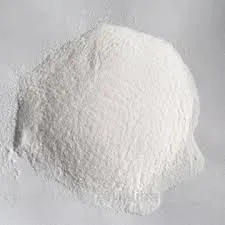
Okt . 11, 2024 07:08 Back to list
HPMC Varieties and Their Applications in Pharmaceutical and Food Industries
HPMC Grades and Their Uses
Hydroxypropyl Methylcellulose (HPMC) is a widely used polymer derived from cellulose, a natural polymer found in plant cell walls. Its unique properties make it a valuable ingredient in various industries, particularly in pharmaceuticals, food, cosmetics, and construction. Understanding the different grades of HPMC and their specific applications is crucial for optimizing its use in various formulations.
What is HPMC?
HPMC is a non-ionic cellulose ether that is soluble in water and can form viscous solutions. It is produced by the etherification of cellulose, which involves the substitution of hydroxyl groups on the cellulose chain with hydroxypropyl and methoxy groups. The degree of substitution and the viscosity of the resulting HPMC determine its grade and usability in various applications.
HPMC Grades
HPMC is categorized into several grades based on factors such as viscosity, degree of substitution, and solubility characteristics. Commonly, HPMC grades are classified by their viscosity at 2% concentration in water. Some common grades include
1. Low Viscosity Grade These grades are typically used for applications requiring low thickening properties. They have a viscosity range of 1,500 to 5,000 mPa.s. Low viscosity HPMC is often used as a stabilizer in food products and as a binder in pharmaceutical formulations.
2. Medium Viscosity Grade Medium viscosity grades range from 5,000 to 15,000 mPa.s. These grades offer a balance of thickening and binding properties and are commonly used in the formulation of gels, creams, and lotions in the cosmetic industry.
hpmc grades and uses

3. High Viscosity Grade High viscosity grades exceed 15,000 mPa.s and exhibit superior thickening abilities. They are used in specialized pharmaceutical formulations, where high viscosity is desired for controlled release applications, and in construction materials for enhancing workability and adhesion.
Applications of HPMC
1. Pharmaceutical Industry In the pharmaceutical sector, HPMC serves multiple functions. It acts as a binder in tablet formulations, ensuring the integrity and consistency of the tablets. Its hydrophilic nature allows it to be used in controlled-release formulations, enabling a slow and steady release of active ingredients. Additionally, HPMC is often used in the manufacturing of eye drops due to its ability to increase viscosity and provide sustained hydration.
2. Food Industry HPMC is utilized in various food applications. It acts as a thickening agent, stabilizer, and emulsifier in products like sauces, dressings, and dairy products. Its ability to form gels makes it suitable for gluten-free and low-fat food formulations, where texture and mouthfeel are crucial.
3. Cosmetic and Personal Care Products In cosmetics, HPMC is favored for its thickening and stabilizing properties. It is used in creams, lotions, and gel-like products, enhancing their texture and improving spreadability. Furthermore, HPMC's compatibility with other ingredients allows formulators to create stable emulsions and suspensions.
4. Construction Industry In the construction sector, HPMC is commonly included in cement-based products. It enhances the workability and adhesion of mortars and plasters, increasing their effectiveness and durability. The water retention properties of HPMC also help prevent the quick drying of these materials, allowing for extended processing times.
Conclusion
Understanding the various grades and uses of Hydroxypropyl Methylcellulose (HPMC) is vital for industries leveraging its benefits. From pharmaceuticals to food and construction, HPMC’s versatility is unmatched. By selecting the appropriate HPMC grade for specific applications, manufacturers can optimize product performance, ensuring quality and satisfaction in end-user experiences across multiple sectors.
-
Unlocking the Benefits of HPMC Products: A Gateway to Versatile Applications
NewsAug.07,2025
-
Unleashing the Potential of HPMC Ashland: A Comprehensive Look
NewsAug.07,2025
-
Tile Bonding Cellulose: The Key to Superior Adhesion and Durability
NewsAug.07,2025
-
Hydroxypropyl Methylcellulose Powder: The Versatile Component in Modern Pharmaceuticals
NewsAug.07,2025
-
Hydroxyethyl Cellulose: The Versatile Solution for Various Industries
NewsAug.07,2025
-
Hydroxyethyl Cellulose (HEC): The Versatile Polymer for Various Applications
NewsAug.07,2025







